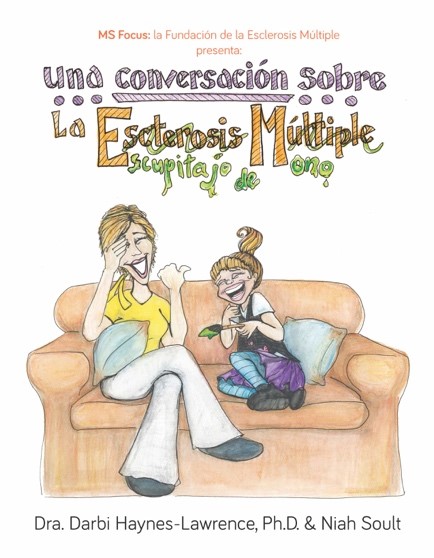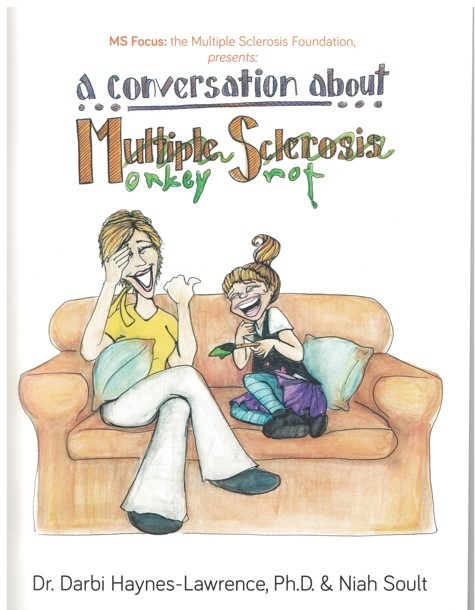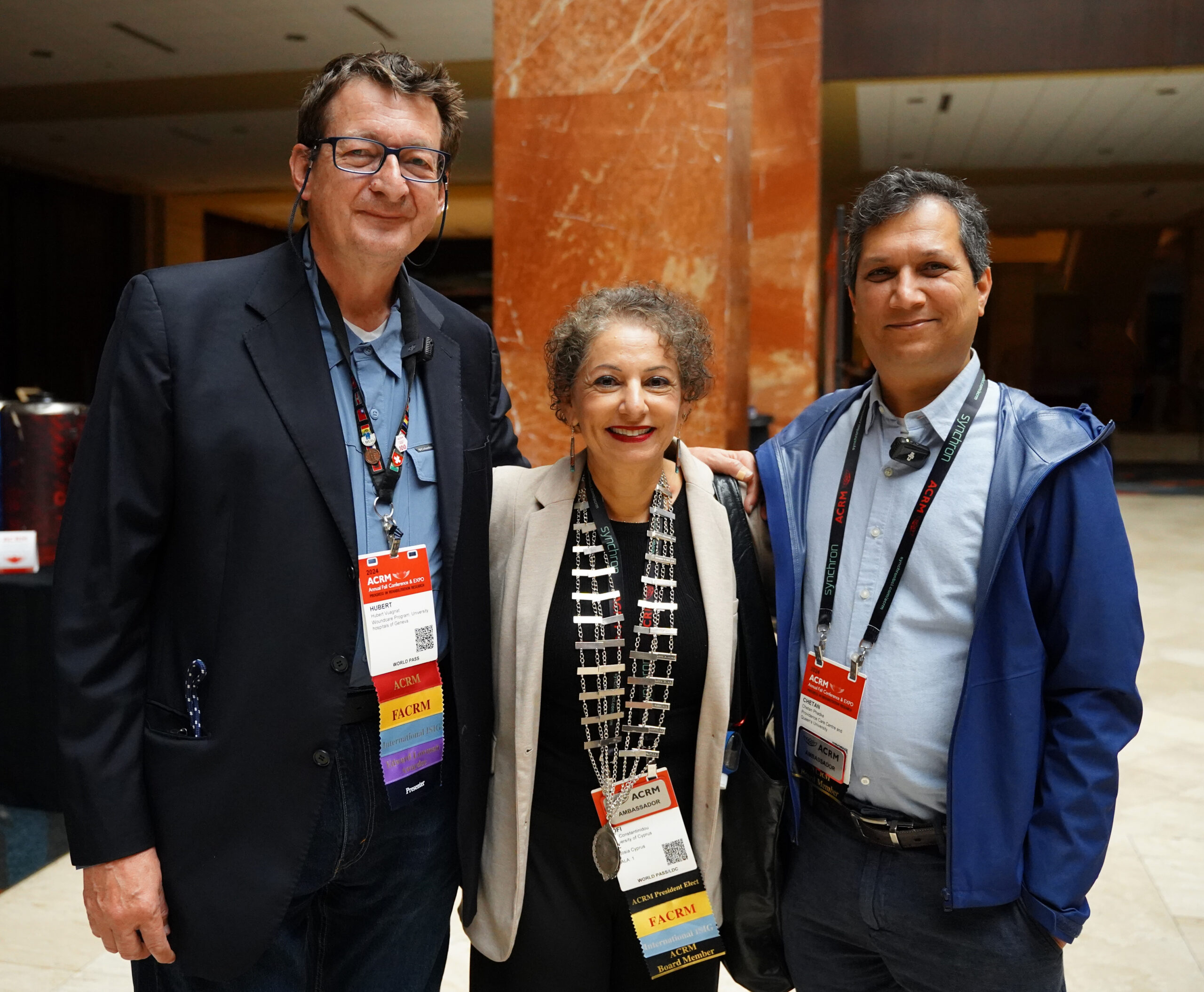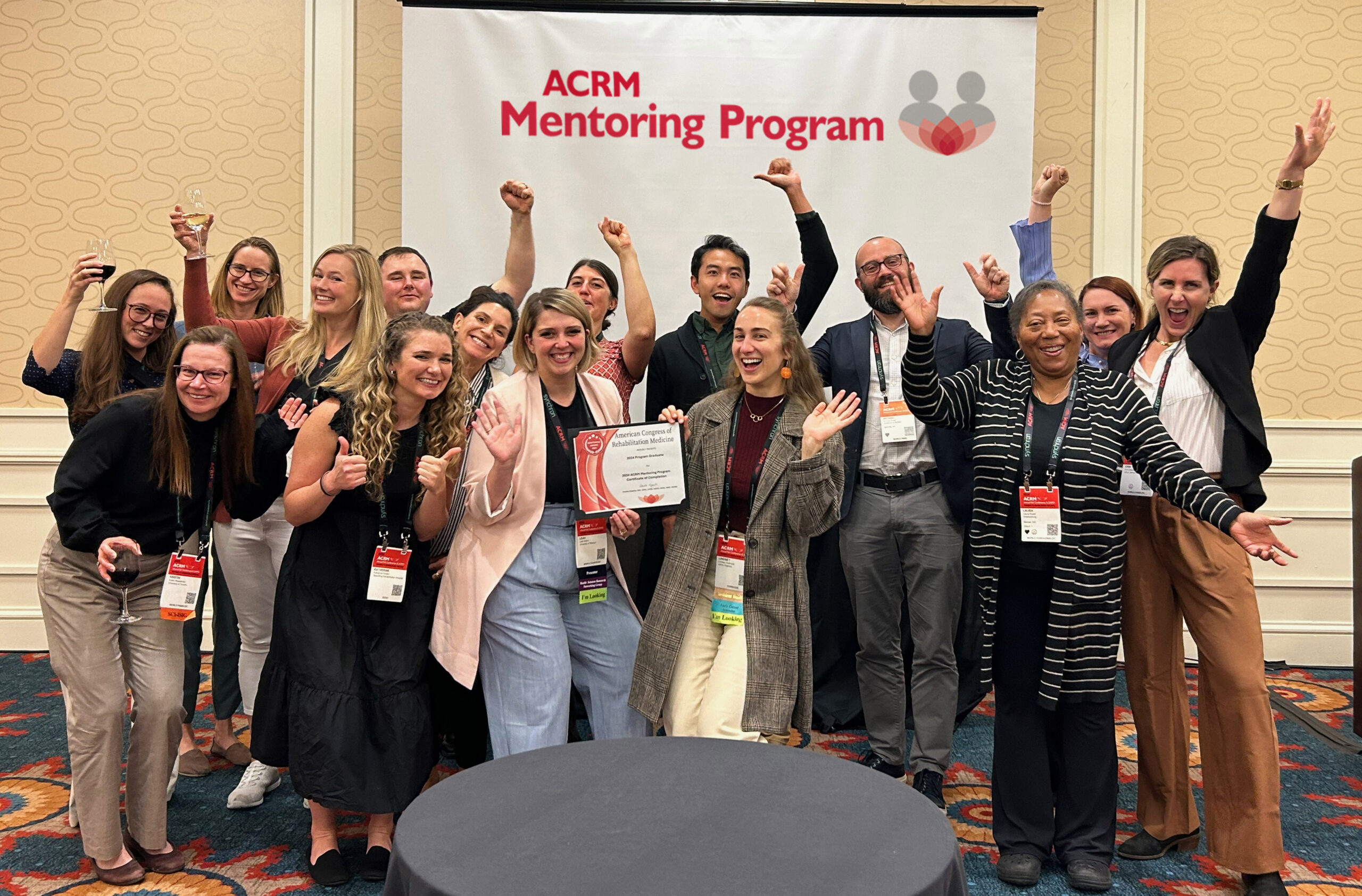Resource Update

In this newsletter, Dr. Darbi Haynes-Lawrence discusses a resource for children and parents who would like to start a conversation about the diagnosis of multiple sclerosis. Specifically, she talks about how the book came about through the prism of her personal experience as a person living with multiple sclerosis.
Dr. Darbi Haynes-Lawrence is an Associate Professor of Child and Family Studies in the Department of Applied Human Sciences at the Western Kentucky University.
In 2014 a colleague and I conducted a study where we discovered an emotional plea from parents with multiple sclerosis (MS) for assistance in explaining the disease to their children. Using knowledge gleaned from that study, I created a children’s book called “A Conversation about M.ultiple S.clerosis: M.aking S.ense out of MS” This book follows the characters Mom and Sami as they explain MS, as well as aspects of their journey in adjusting to the mother’s diagnosis. The story includes touching elements from the view of 10-year-old Sami, such as how she feels about her mom’s MS. The book assists parents that have MS. explain the disease to their children in developmentally appropriate and humorous ways.
 The book is engaging and encourages the readers to ask and answer questions they have as they turn the pages. The design of the book was to be read along with children, allowing for their questions to be asked. Our book was written for children between the ages of 7 to 12. For a 7 to 9-year-old, we recommend reading with the child. For a 10 to 12-year-old, the book can be read independently, with opportunities for the child to ask questions. There is also a parent resource section in the back of the book. The Multiple Sclerosis Foundation (MSF) graciously publishes this book for free to anyone who would like a copy. The book has been delivered to multiple countries, has been translated to Spanish, and is available online as a read-along-online book. Additionally, it is the first in a series of “A conversation about…” books, all focused on MS.
The book is engaging and encourages the readers to ask and answer questions they have as they turn the pages. The design of the book was to be read along with children, allowing for their questions to be asked. Our book was written for children between the ages of 7 to 12. For a 7 to 9-year-old, we recommend reading with the child. For a 10 to 12-year-old, the book can be read independently, with opportunities for the child to ask questions. There is also a parent resource section in the back of the book. The Multiple Sclerosis Foundation (MSF) graciously publishes this book for free to anyone who would like a copy. The book has been delivered to multiple countries, has been translated to Spanish, and is available online as a read-along-online book. Additionally, it is the first in a series of “A conversation about…” books, all focused on MS.
As a person with MS, the design of this book was quite personal. My diagnosis was in 2008 when my daughter was four years old. At the time, there were a few children’s books available on the topic of a parent having MS, but none seemed to ‘fit’ our child or us. Since we did not have an adequate resource, my husband and I explained each step of our journey in small details. All the steps we were going through with the diagnostic process, the multitude of visits to a neurologist, continually using clear and developmentally appropriate language, descriptions, and explanations, especially during relapses. We did our best to remove the fear from the situation, but at the same time, acknowledging those concerns. Child-friendly and developmentally appropriate terms were used throughout the entire process. Everything was presented in child-friendly terms. We paused for questions, even those that were asked repeatedly! We did our best to remember – she is a preschooler. Her mommy is sick, and she is scared just like we are. It was challenging to be her strong mom during a devastatingly frightening time.
When I designed the book, I wrote our story, the journey that my family experienced. I started writing the book in 2015, and at that time, our daughter was 11years old. Hearing the diagnostic process from her viewpoint was intriguing. I included those memories in the development of the book. It is her journey too, after all. Our illustrator, Niah Soult, captured the content so beautifully. One thing I remember so clearly was my first MRI with a new neurologist. The technicians allowed my husband and I to show Sami the MRI machine. I told her it would take pictures of my brain, and that we should all guess what color it was. I remember Sami’s disappointment when the technician showed her the results – nope. My brain was plain old black and white!
As a researcher, I had always wondered if other parents with MS were experiencing these similarities? What were they telling their children? How were they handling the emotional turmoil of a diagnosis, of relapses? MS is so varied, frustratingly so, and I needed to know what other parents were feeling. I searched for research to help me through the diagnostic journey and found little from other parents with MS. Thus, the 2014 study was born, and the results discovered.
The guiding questions throughout the book was another piece that I wanted to include for families. When we are completely stressed out, it is difficult to think about questions to further a discussion with your child. Guiding questions, or conversation starters, are found at the bottom of the pages. An additional challenge is to try and explain what different words mean, especially ones we do not use every day. In our first book, we have a ‘talking neuron’ who provides definitions of terms presented on the page. In our second book, which is about service dogs for people with MS, it is a talking bone.
 A portion of the book that I enjoy and one that I could have used as a newly diagnosed person is the parent resource section in the back of the book. This section is in each of our books. This section includes tips for communicating with your children, handling emotions, taking care of you (the adults), plus other topics. Additionally, the parent resource section includes beneficial community resources.
A portion of the book that I enjoy and one that I could have used as a newly diagnosed person is the parent resource section in the back of the book. This section is in each of our books. This section includes tips for communicating with your children, handling emotions, taking care of you (the adults), plus other topics. Additionally, the parent resource section includes beneficial community resources.
One of the most important things to me is community outreach and the distribution of the book. Upon receiving a diagnosis of MS, the information on the internet can be overwhelming. People may not know where to search for a book like this; they may not have funds to purchase the book to help them explain this disease to their young children. The MSF publishes the book for free. They also had a fantastic idea to put it online as a read-a-long book. It was an honor for Sami and me to voice the characters in the book! The book is now available in Spanish, and a read-a-long version in Spanish is in the works. We are trying to reach as many people as possible with our books all over the world. We would like to be one bright spot in a not-so-wonderful journey that is Multiple Sclerosis.








